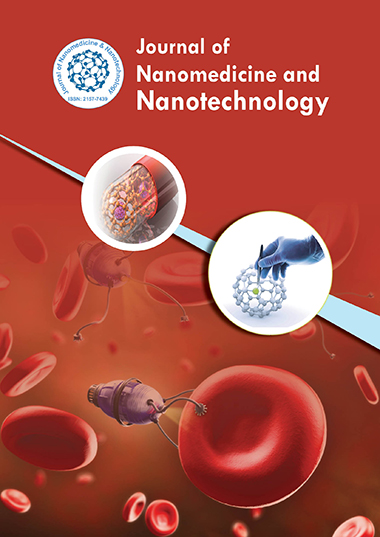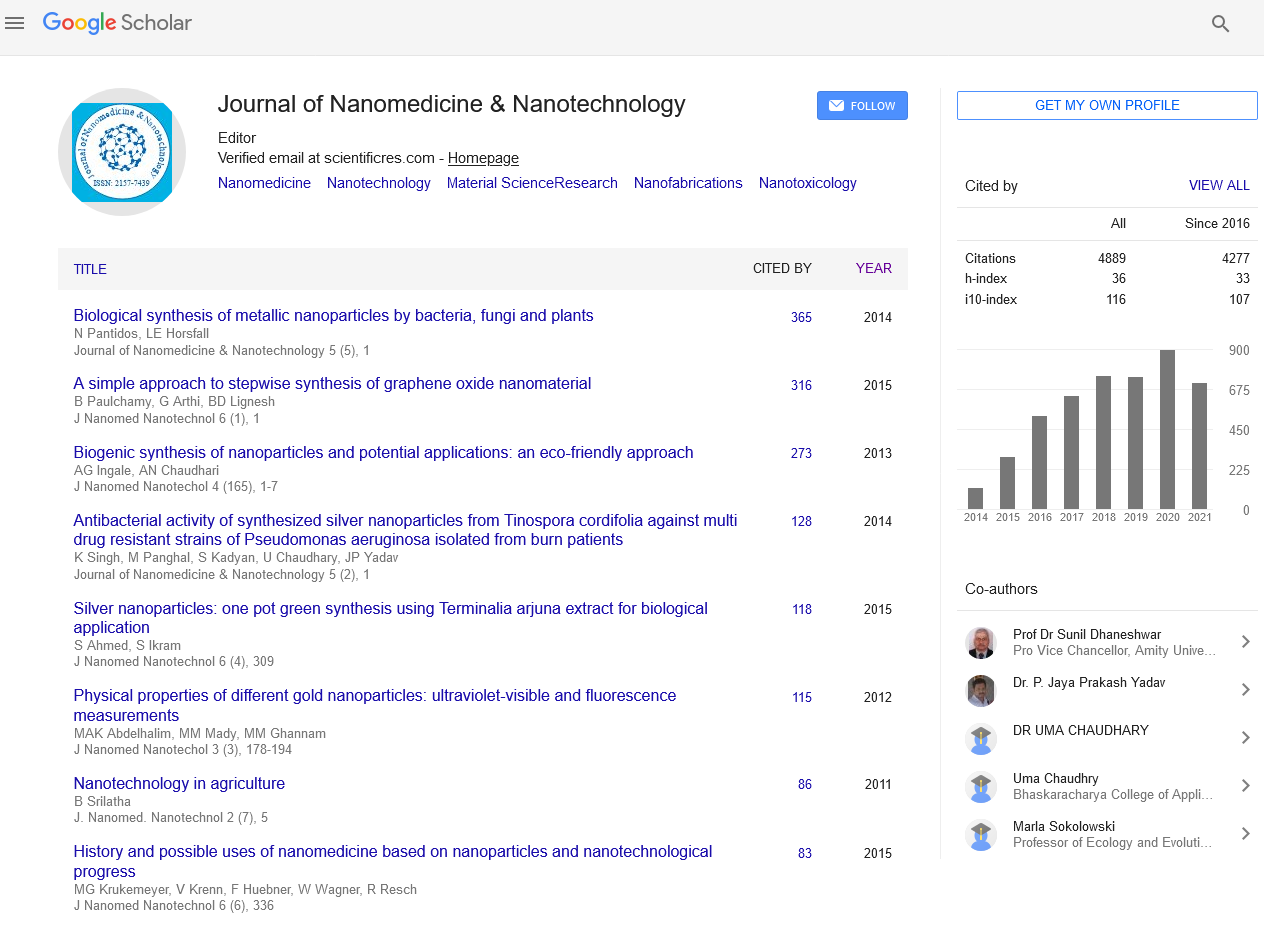Indexed In
- Open J Gate
- Genamics JournalSeek
- Academic Keys
- JournalTOCs
- ResearchBible
- China National Knowledge Infrastructure (CNKI)
- Scimago
- Ulrich's Periodicals Directory
- Electronic Journals Library
- RefSeek
- Hamdard University
- EBSCO A-Z
- OCLC- WorldCat
- SWB online catalog
- Virtual Library of Biology (vifabio)
- Publons
- MIAR
- Scientific Indexing Services (SIS)
- Euro Pub
- Google Scholar
Useful Links
Share This Page
Journal Flyer

Open Access Journals
- Agri and Aquaculture
- Biochemistry
- Bioinformatics & Systems Biology
- Business & Management
- Chemistry
- Clinical Sciences
- Engineering
- Food & Nutrition
- General Science
- Genetics & Molecular Biology
- Immunology & Microbiology
- Medical Sciences
- Neuroscience & Psychology
- Nursing & Health Care
- Pharmaceutical Sciences
Detection of H2O2 based on multi-porous SnO2 nanofiber carbon nanotube nanocomposite with facilitated electron transfer of redox protein
24th World Congress on Nanomaterials and Nanotechnology
July 12-13, 2018 Bangkok, Thailand
A K M Kafi
Universiti Malaysia Pahang, Malaysia
Posters & Accepted Abstracts: J Nanomed Nanotechnol
Abstract:
A novel H2O2 biosensor is fabricated using multi-porous SnO2 nanofiber/carbon nanotubes (CNTs) composite as a matrix for the immobilization of redox protein onto glassy carbon electrode. The Multi-Porous Nanofiber (MPNFs) of SnO2 is synthesized by electro-spinning technique from the tin precursor. This nanofiber shows high surface area and good electrical conductivity. The SnO2 nanofiber/CNT composite increases the efficiency of biomolecule loading due to its high surface area. The morphology of the nanofiber has been evaluated by Scanning Electron Microscopy (SEM). A direct electron transfer between the protein‚??s redox center and the glassy carbon electrode is established after fabrication of the electrode. The fabricated electrode shows excellent electro-catalytic reduction to H2O2.The catalysis currents increases linearly to the H2O2 concentration in a wide range of 1.0√?10-6-1.4√?10-4 M and the lowest detection limit was 30 nM (S/N=3).


